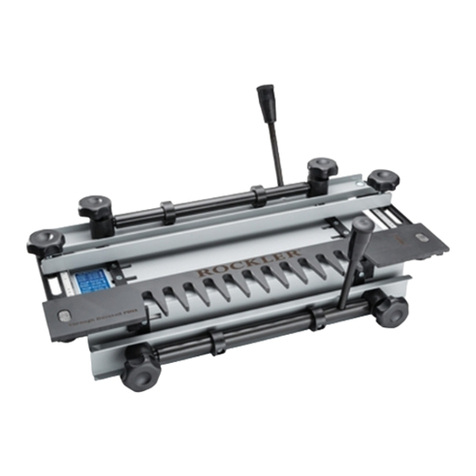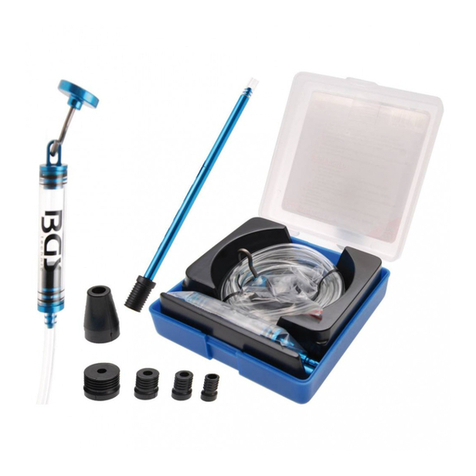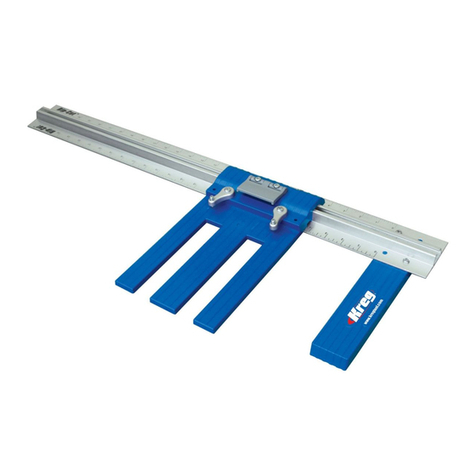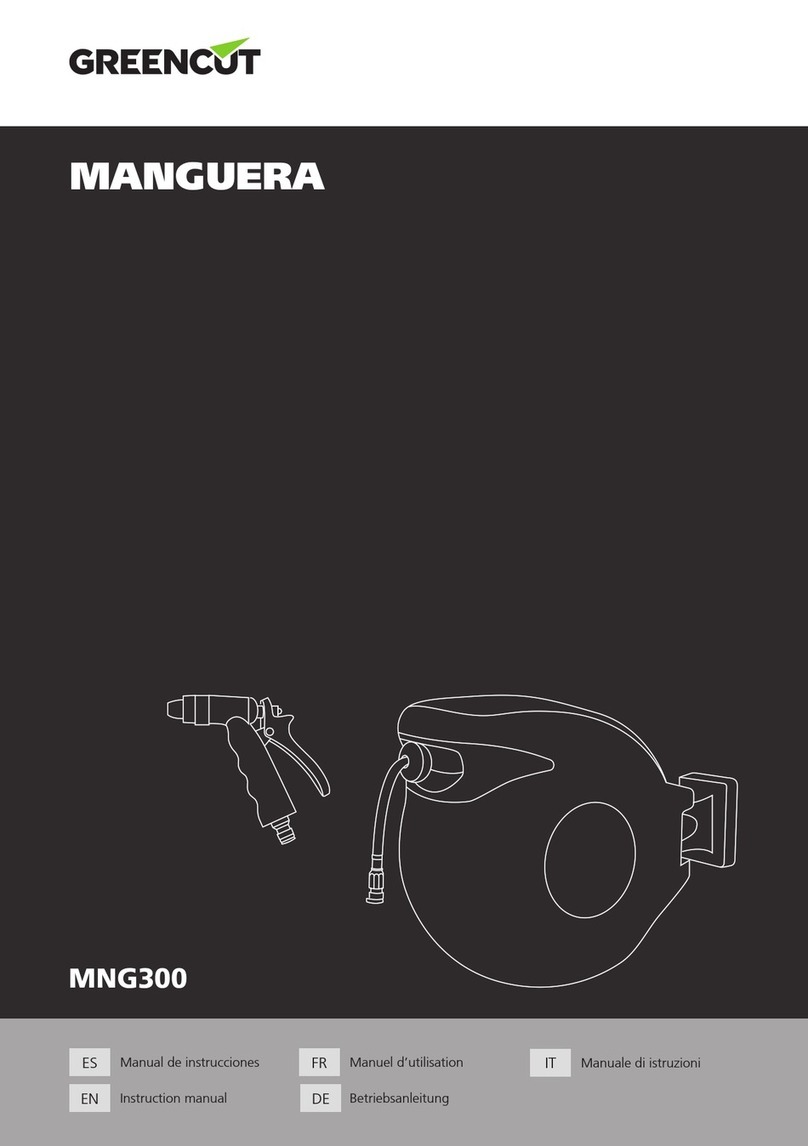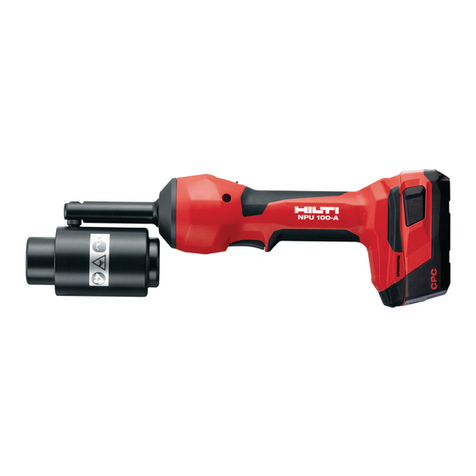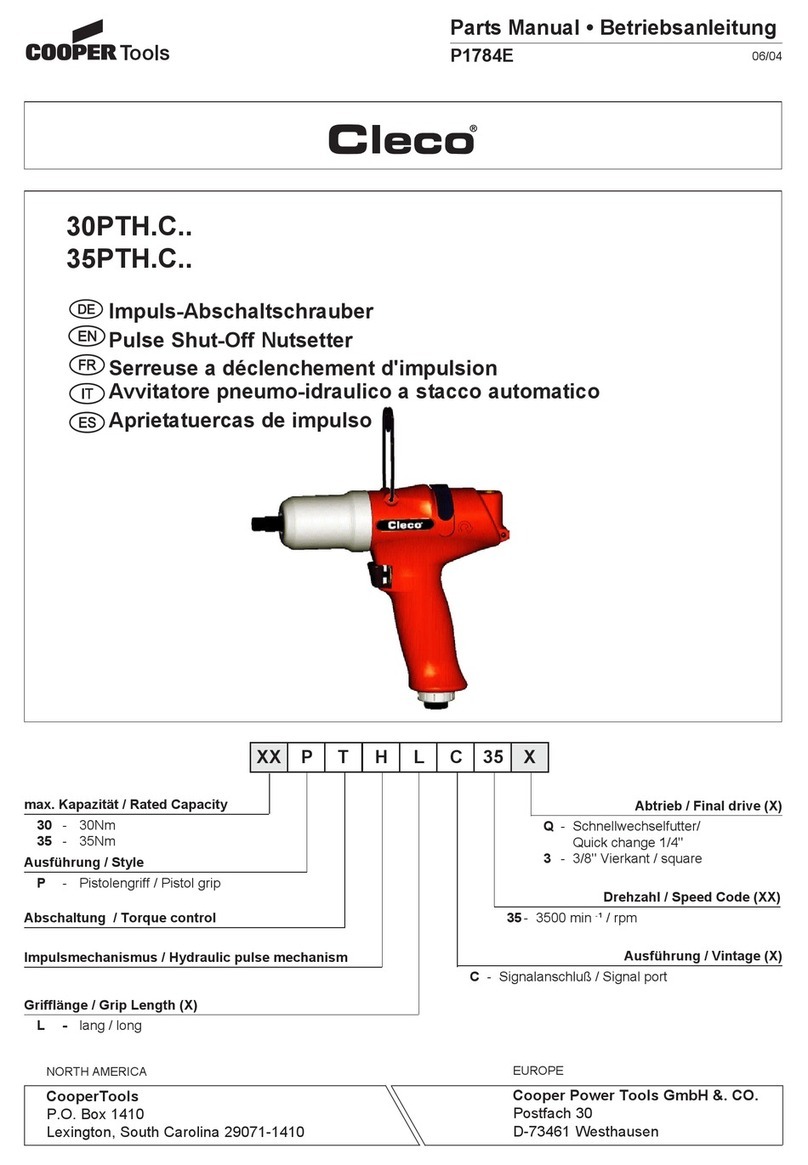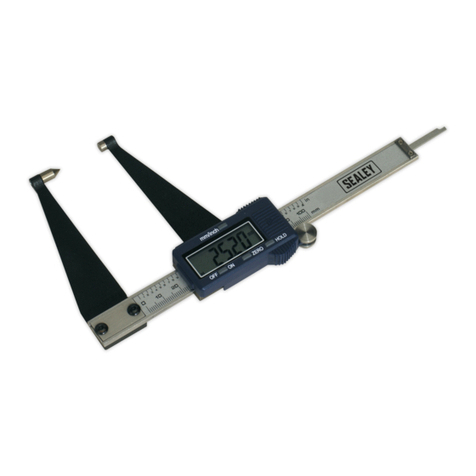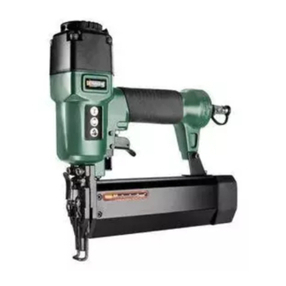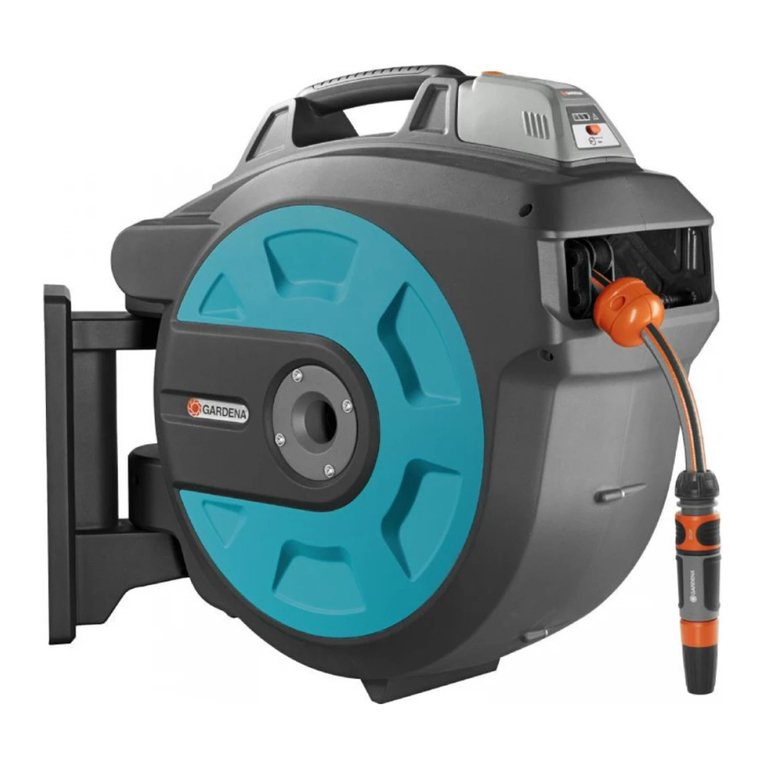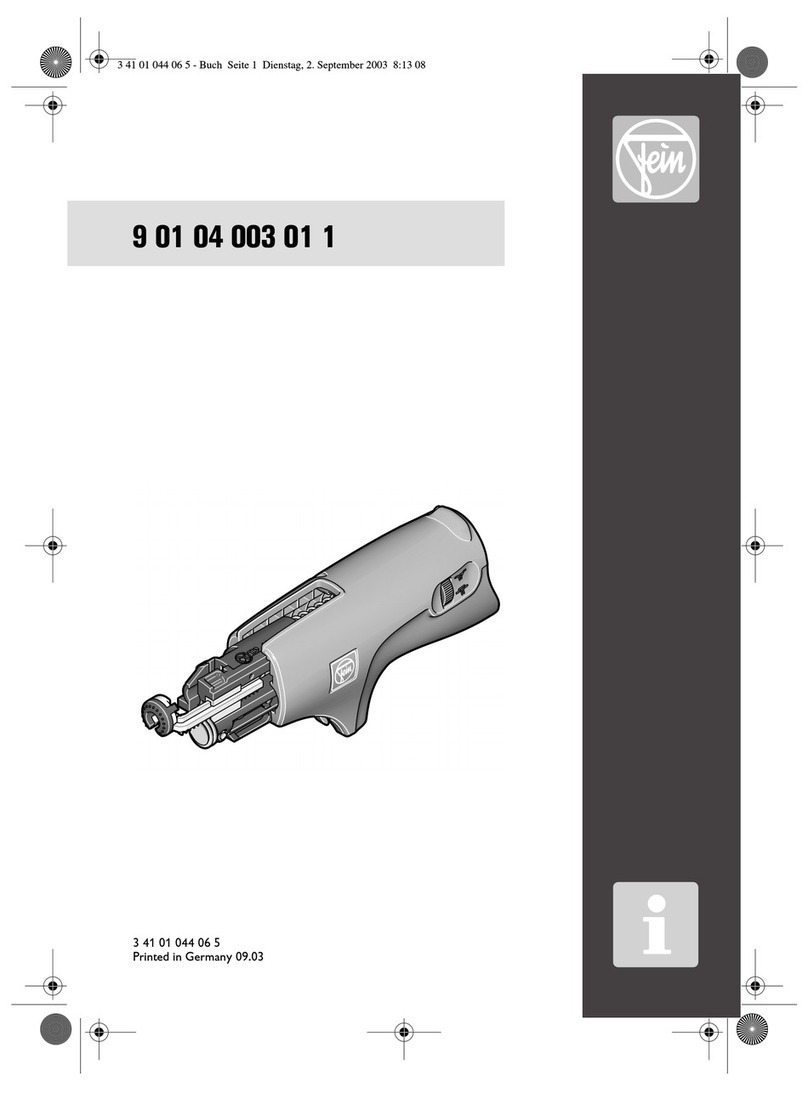Trelawny Single Scaler Standard Duty User manual

Scaling Hammers
Operation and Maintenance Manual
www.trelawnyspt.co.uk



OPERATION
General Information
Before operating Trelawny Scaling
Hammers, this manual must be read and
understood by the operator, if in any
doubt, ask your supervisor before using
this equipment. Local safety regulations
must be followed at all times. Failure to
follow these instructions could result in
damage to the Scaler and/or personal
injury.
Trelawny SPT Ltd disclaims all
responsibility for damage to persons or
objects arising as a consequence of
incorrect handling of the tool, failure to
inspect the tool for damage or other
faults that may influence it’s operation
prior to starting work, or failure to follow
the safety regulations listed or applicable
to the job site.
The standard scaling tools are primarily
designed for removal of heavy rust and
scale.
The heavy-duty versions is suitable for
concrete reduction and the removal of
laitance from concrete.
These tools must not be used in a
fixture.
Note: Cruciform headed pistons are
suited to the removal of heavy rust and
scale and for the reduction of concrete
where a smoother finish is required;
these will reduce the aggregate as well
as the concrete surface.
Bush Hammer style headed pistons are
best suited to concrete reduction and for
laitance removal; these also reduce the
damage caused to the aggregate,
ensuring that a stronger bond is created
with the next layer.
Air Supply
The compressed air must be free from
water and dirt. The installation of a filter/
regulator/lubricator air preparation set
(with moisture trap) adjacent to the tool
is strongly recommended.
Always clear the air hose before
connection to the tool. Ensure that no
moisture (condensation) is present in the
air hose.
Ensure that a minimum 10mm (3/8”)
bore air hose is used and that all
couplings are secure, leak free and in
good condition.
Limit the length of air hose to 10M (33ft).
Where extra length is necessary, for
each additional 15M (50ft) of air hose
used, the pressure drop is approximately
0.16bar (3psi).
Correct operating pressure is 6.2bar
(90 psi).
Do not let the operating pressure fall
below 5.5bar (80p.s.i.) or rise above
6.9bar (100 psi) absolute maximum.
The compressor must be able to supply
a minimum of 7.0 lps (15cfm) for Single
Scalers and 12 lps (25cfm) for Triple
Scalers, (Free air, not displaced as
quoted by some compressor
manufactures).
In particularly cold weather it is
recommended that a proprietary anti-
freeze lubricating oil is used.
Safety
Always, read instructions first before use.
Do wear Personal Protective Equipment
including safety goggles, footwear, ear
defenders and gloves. In some
environments it will be necessary to wear
facemasks or breathing apparatus.
Do be aware that this tool is not
electrically insulated.
Do keep hands and clothing away from
moving parts.
Do ensure that this tool is lubricated
daily.
Do be aware that the tool can create
dust and
flying debris.
Do be aware of others working around
you.
Do store this tool in a secure and dry
environment.
Always observe safe-working
practices at all times.
Do not allow the tool to run unattended.
Do not use this tool in potentially
explosive environments.
Do not drag this tool by the air hose.
Do not use the Scaler as a lever.
Do not use petrol (gasoline), thinners or
any other high flash point solvent to
clean the tool.
Do not modify this tool in any way, as
this will invalidate the warranty and could
lead to serious injury.
Risk of Hand-arm
Vibration injury
These tools may cause Hand-arm
Vibration Syndrome injury if their use is
not adequately managed.
We advise you to carry out a risk
assessment and to implement measures
such as; limiting exposure time [i.e.
actual trigger time, not total time at
work], job rotation, ensuring the tools are
used correctly, ensuring the tools are
maintained according to our
recommendations, and ensuring that the
operators wear personal protective
equipment [PPE] particularly gloves
and clothing to keep them warm and
dry.
Employers should consider setting up a
programme of health surveillance to
establish a benchmark for each operator
and to detect any early symptoms of
vibration injury.
We are not aware of any PPE that
provides protection against vibration
injury by attenuating vibration emissions.
See ‘Specifications’ section for
vibration emission data.
Further advice is available from our
Technical Department.
Recommended
lubricants
Oil the tool daily before use. Put a few
drops of one of the following zinc free air
tool lubricants through the air inlet.
SHELL S22 or R10
CASTROL Hyspin ZZ32
Cleaning
At intervals of no more than 40 hours or
if operation becomes unproductive and
the piston shows signs of sticking,
dismantle and clean with a highly refined
paraffin.
Immediately after cleaning, thoroughly oil
the tool with one of the recommended
lubricants.
Starting work
Prior to operating the tool check: -
That all fittings are secure, free from
leaks and air hoses are in good
condition.
That the air pressure is correct for this
tool 6.2 bar (90 p.s.i.). Put a few drops of
recommended lubricant into the air inlet
of the tool.
To operate the tool, which is dependant
on the type of lever fitted, for those fitted
with a safety lever, first push thumb
button forwards and then for both styles
of lever, pull the lever towards the
handle grip to start the tool, then apply
the cutter heads to the surface being
prepared.
To switch off, simply release the
throttle lever.
Care must be taken to avoid damaging
or tripping over the air hose. Maintain
contact with the work surface with
sufficient pressure only to keep the tool
from bouncing off. Excessive pressure
can prevent the tool from working to its
full capacity. Handled correctly the
Scaler will work quickly and efficiently.

lever roll pin (8), and then remove the
throttle lever (7). Rotate the tool 180
degrees in the vice to access the valve.
Unscrew the valve cap (1) using a
screwdriver, check the valve cap 'O'Ring
(2), remove the spring (3), push out the
valve stem (4) and remove the 'O'Ring
(5). Check the valve and 'O'Ring for
wear.
Assembly (Workshop)
Before any assembly takes place,
ensure all parts are clean and have a
film of air tool oil lubrication unless
otherwise stated. Avoid lubricating oil or
grease contaminating the threads of the
end cap (17), the threads within the bore
of the bodies (23/24) and the tapers on
piston and cutter heads. The end caps
will require securing with a thread-
locking adhesive. It is good practice to
renew all ‘O’ Rings (2/5) and the brush
seals (22). Replace any parts showing
signs of wear; paying particular attention
to the small bore of the cylinder.
Head Assembly - Taper Fit (On-Site)
Thoroughly clean around area of cutter
head and piston. Remove all traces of
debris/oil from the taper on the piston
(20) and internal taper of the cutter head
(25/26/27) by cleaning with suitable oil
free solvent. Place the tool in a position
where the end cap is on a solid surface;
Select one of the cleaned new cutter
heads and place on to the taper of the
piston. Using a soft-faced hammer
deliver a sharp blow to the cutter head.
Head Assembly - taper fit (Workshop)
Remove all traces of oil and dirt etc, from
the taper diameter on the piston (20) and
cutter head (25/26/27) by cleaning with
suitable oil free solvent. Fit the piston
into the cylinder (21) as shown in the
service layout. Place the assembly onto
a solid surface; fit a new brush-seal (22)
over the piston and into the recess of the
cylinder. Select one of the cleaned new
cutter head and place on to the taper of
the piston. Using a soft-faced hammer
deliver a sharp blow to the cutter head.
Note: If you are re-fitting a used cutter
head to the piston it is essential that the
internal diameter of the cutter head is re-
surfaced using a medium grade of emery
cloth - this will ensure a good fit between
cutter head and piston, do not use
adhesive of any description on the
taper.
If the taper has expanded to much on
the old cutter heads, they may not stay
on the piston, replacements will be
required.
One Piece Piston and Piston/Cylinder
assembly (Workshop)
Lubricate the piston (20/33) and cylinder
bore (21/29) and push the piston into the
cylinder bore.
Excessive operator pressure will not
improve the tool efficiency but will
cause premature tool failure and
operator fatigue.
Never allow the tool to run continuously
whilst not in contact with the surface
being prepared.
Please be aware: that this tool will
reduce in power or stop working if the
end cap (17) has become unscrewed.
Maintenance
Maintenance must only be carried out by
a competent person. Disconnect the
tool from the air supply before
carrying out any of the following
operations.
Clean all debris from the exterior of the
tool.
Head removal - Taper Fit (On site)
Lay the scaling hammer on a solid
surface with the cutter head (25/26/27)
facing uppermost. Place the head
removal washer (32) between the cutter
head and the body; insert the removal
pin (31), into cutter head hole (refer to
diagram for pictorial illustration).
Wearing safety glasses and using a
medium size hammer give a sharp blow
to the head of the pin, which will release
the cutter head from the piston.
One Piece Piston & Piston/Cylinder
Assembly removal (Workshop)
Hold the scaler body (24) in a vice, using
the flats provided and with the end cap
uppermost. On triple scalers, secure the
tool in a vice, clamping on all three cutter
heads (On one piece pistons take care
not to clamp on the ground surfaces).
Unscrew the end cap (17). Remove
spring cap (19) and spring (18) from the
end cap. From the bottom of the body,
push up the cutter head to remove the
piston assembly.
Head removal - Taper Fit (Workshop)
Lay the piston and cylinder assembly on
a solid surface with the cutter head
facing uppermost. Place the head
removal washer (32) between the cutter
head and the cylinder; insert the removal
pin (31), into cutter head hole (refer to
diagram for pictorial illustration).
Wearing safety glasses and using a
medium size hammer, give a sharp blow
to the head of the pin, which will release
the cutter head from the piston. Inspect
all components for wear, replace as
necessary.
Valve body servicing (Workshop)
Clamp the handle (10) assembly firmly in
a soft face jawed vice (valve body end)
throttle lever upper most. Using a 3mm
diameter pin punch, remove the throttle
Lay the tool on a bench with the body
(23/24) on its side and Insert the cylinder
assembly into the body.
Valve Body assembly (Workshop)
Clamp the handle (10) assembly firmly in
a soft faced vice (valve body end), insert
new valve stem 'O'Ring (5) into valve
body (6), followed by the valve stem (4),
spring (3), then the valve cap (1)
complete with its 'O'Ring (2), tighten the
valve cap with a screwdriver.
Rotate assembly 180 degrees in vice.
Using a 3mm diameter pin punch locate
and align the throttle lever (7) in position,
then drive in the throttle lever roll pin (8)
into the pin location.
FINAL ASSEMBLY (Workshop)
Assemble the end cap (17), fit spring
(18) into the end cap and fit spring cap
(19) into the end cap as shown in the
service layout.
Select as required, a piston/cutterhead,
insert into the body (23/24) and apply a
few drops of air tool lubricant to the top
of the piston(s).
Hold the handle (10) in a soft faced vice
ensuring the screw cap threads are
uppermost.
Remove all traces of oil from the
screwed cap threads and threads of the
body by cleaning with suitable oil free
solvent.
Apply a bead of Loctite 243 sealant to
the first 3 threads of the end cap.
Screw end cap assembly into the body
until finger tight and using a suitable
spanner torque down to 55N.m. (40
lbs.ft).
Disposal
When the tool and its accessories are
taken out of service for disposal, it is
recommended that: - They are rendered
unusable to prevent improper re-use.
They are dismantled into component
form, segregated according to material
composition and disposed of using waste
recycling processes specified by local
regulations.
Machinery Directive
Information
This machine has been designed and
produced in accordance with the
following directives: 2006/42/EC
Machinery Directive
and applicable harmonised standard:
EN ISO 1 1148-4:2010
Trelawny tools are thoroughly tested
under specified conditions in accordance
with applicable internationally recognised
standards.
MAINTENANCE

STANDARD & HEAVY DUTY SINGLE AND TRIPLE SCALING HAMMERS
EXPLODED VIEW

EXPLODED VIEW
STANDARD & VIBRATION REDUCED SINGLE SCALING HAMMER

PARTS LIST
Item
No Part No Description Item
No Part No Description
1615.3021 Valve Cap 19 615.5361 Spring Cap
2809.0139 O’ Ring - Valve Cap 20 612.5301 Piston (Std taper fit)
3712.3022 Valve Spring 21 613.5301 Cylinder (Std taper fit)
4618.3022 Valve Stem 22 614.5301 Brush Seal
5809.0089 O’ Ring - Valve Seat 23 611.5301 Triple Scaler Body (Std taper fit)
6616.5321 Valve Body 611.5355 Triple Scaler Body (H/Duty)
*423.5321 Valve Body Assembly 24 411.5101 Single Scaler Body (Std & H/Duty)
7716.3000 Throttle Lever 411.5121 Single Scaler Body (Vibration Reduced,
Std and H/Duty)
*716.1000 Throttle Safety Lever 25 426.5351 Cruciform Head (Taper Fit)
8813.0108 Roll Pin 26 426.5352 Bush Hammer Head (Taper Fit)
9711.5301 Adaptor 27 606.5303 Beryllium Copper Head (Taper Fit)
10 624.5301 Main Handle (Standard Tools)
624.5350 Main Handle (Vibration Reduced) 29 613.5303 Cylinder (H/Duty)
11 717.5301 Rubber Grip
12 625.5301 Locknut 31 827.0428 Cutterhead Removal Pin
13 810.9001 Sealing Washer 32 633.5301 Cutter Head Removal Washer
14 634.5301 Hexagon Plug 33 612.5320 Single Piece H/Duty Piston (Cruciform)
15 822.5302 Side Handle Grip 612.5325 Single Piece H/Duty Piston (Bush)
16 422.5315 Side Handle
17 615.5341 Screwed Cap 36 719.1380 Flexible Connector
18 712.5301 Compression Spring 37 821.2000 Hose Clamp
*Items not shown in exploded view
*633.5301 Single Scaler Vacuum Shroud
*437.5300 Triple Scaler Vacuum Shroud
*731.0120 Vacuum Shroud Seal
TROUBLE SHOOTING
Poor performance or lack of
power Low air pressure. Ensure that the air pressure is correct at 90psi, max 100psi.
If tool has been left for some time without use, the oil
may dry out slightly causing a sticky residue. Strip tool down and re-oil.
Tool worn out, can you feel side ways movement
between the piston and cylinder bore. Replace the piston and cylinder, along with a new bush
seal.
Tool continues to run with
trigger released Valve seal may have become dislodged through the tool
being disconnected with the trigger in the open position. Ensure that the trigger has not been taped or wired in the
open position.
Do not use quick release couplings to switch tool off.
Tapered cutterhead will not
stay on piston To high an air pressure being used, piston hits bottom of
cylinder causing head to be jettisoned. Ensure that the air pressure is correct at 90psi, max 100psi.
Traces of oil remained on the tapered surfaces when
replacing cutter head. Ensure that the cutterhead and pistons tapers are
completely free of oil, use a good degreasing agent and
clean cloth prior to assembly.

TECHNICAL SPECIFICATIONS
Declared vibration emission value are in accordance with BS EN 12096: 1997
(k)= the factor of uncertainty, which allows for variations in measurement and production. Vibration data figures are tri-axial, which gives total vibration
emission.
Risk of Hand Arm Injury
Because of various factors, the range of vibration emission during intended use can vary.
The vibration is dependent on the task, the operators grip, and feed force employed etc.
Noise level measured in accordance with EN ISO 15744: 2008
Vibration measured in accordance with EN ISO 28927:2012 and EN ISO 20643:2005
Trelawny Surface Preparation Technology operates a policy of continuous product development and refinement and therefore reserves the right to
change technical specifications and product designs without giving prior notice.
© Copyright 2009, Trelawny SPT Limited, CV31 1XT. UK All rights reserved. Any unauthorised use or copying of the contents or part thereof is
prohibited. This applies to trademarks, model denominations, part numbers and drawings.
Use only genuine Trelawny spares.
The use of non-Trelawny spare parts invalidates the warranty.
Model Single Scaler
Standard Duty Single Scaler
Heavy Duty
VL Single
Scaler
Standard Duty
VL Single Scaler
Heavy Duty Triple Scaler
Standard Duty Triple Scaler
Heavy Duty
Piston Diameter 27mm (1.06”) 27mm (1.06”) 27mm (1.06”) 27mm (1.06”) 27mm (1.06”) 27mm (1.06”)
Piston Length 68.6mm (2.7”) 111.75mm (4.4”) 68.6mm (2.7”) 111.75mm (4.4”) 68.6mm (2.7”) 111.75mm (4.4”)
Piston Stroke 26.0mm (1.023”) 26.5mm (1.04”) 26.0mm (1.023”) 26.5mm (1.04”) 26.0mm (1.023”) 26.5mm (1.04”)
Blows Per Minute 3000 2400 3000 2900 3 x 3000 3 x 2400
Air Consumption 3.3lps 7.0 cfm 3.7 lps (8 cfm) 3.3 lps (7.0 cfm) 4.25 lps (9.0 cfm) 5.2 lps (11 cfm) 7.0 lps (15 cfm)
Air Pressure 6.2 bar (90psi) 6.2 bar (90psi) 6.2 bar (90psi) 6.2 bar (90psi) 6.2 bar (90psi) 6.2 bar (90psi)
Air Inlet 3/8” NPT (c/w 3/8”BSP Adapter)
Length 465mm (18.3”) 465mm (18.3”) 515mm (20.3”) 515mm (20.3”) 450mm (17.7”) 450mm (17.7”)
Working Height 152.5mm (6.0”) 160mm (6.3”) 140mm (5.5”) 160mm (6.3”) 152.5mm (6.0”) 160mm (6.3”)
Weight 2.5kg (5.5 lbs) 2.6kg (5.7 lbs) 2.46kg (5.42lbs) 2.49kg (5.49”lbs) 3.7 kg (8.1 lbs) 5.2 kg (11.4 lbs)
Noise Level LpA dB (A) 88.1 93.9 92.5 90.9 92.7 98.3
Noise Level LwA bD (A) 101.1 106.9 106.3 104.5 105.7 111.3
Vibration Level m/s2
Primary 6.8 (k) 6.96 (k) 3.7 (k) 4.5 (k) 13.4 (k) 8.7 (k)
Vibration Level m/s2
Secondary 31.4 (k) 26.0 (k) 9.9 (k) 9.4 (k) 12.0 (k) 13.5 (k)

NOTES

NOTES

Trelawny SPT Ltd
13 Highdown Road, Sydenham Industrial Estate, Leamington Spa,
Warwickshire, CV31 1XT, United Kingdom
Telephone: +44 (0)1926 883781 - Fax: +44 (0)1926 450352
Email: [email protected].uk
© TSPT UK 2009 Part No: 735.5300 issue 03/10/17 www.trelawnyspt.co.uk
This manual suits for next models
5
Table of contents
Other Trelawny Tools manuals
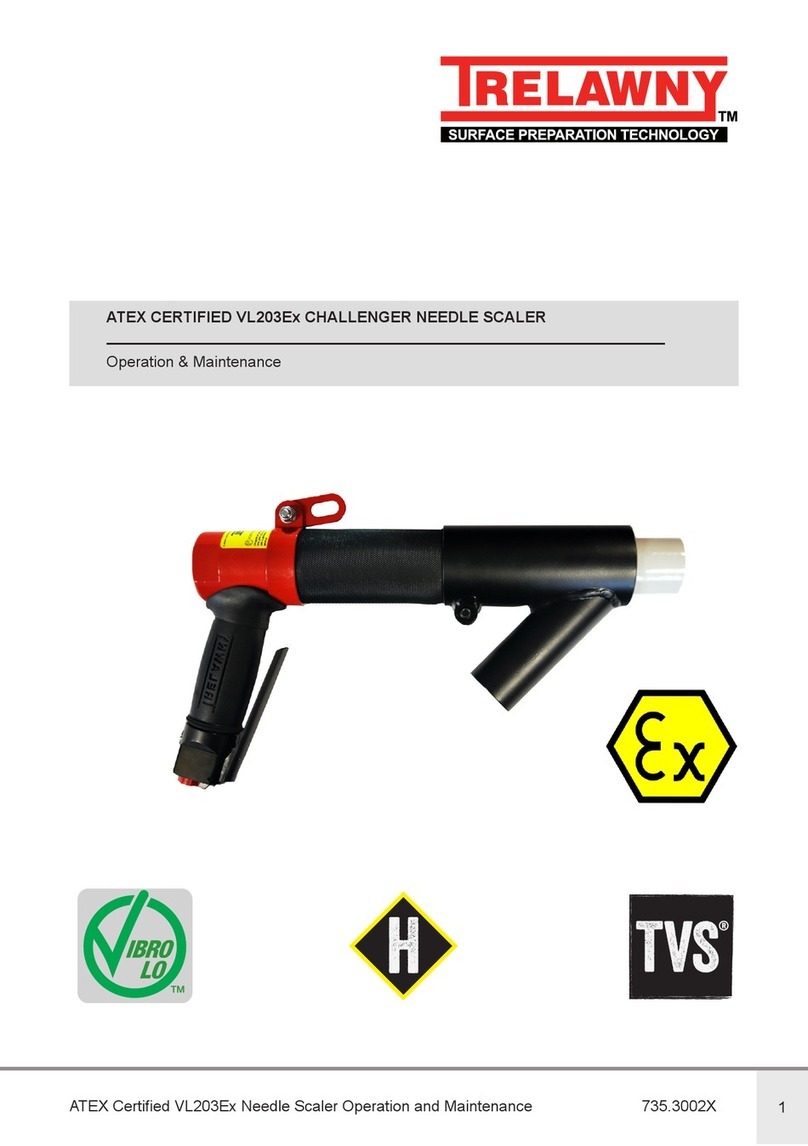
Trelawny
Trelawny VL203Ex Troubleshooting guide
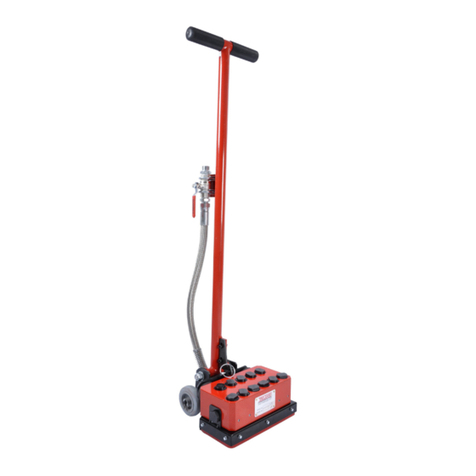
Trelawny
Trelawny SF11EX User manual
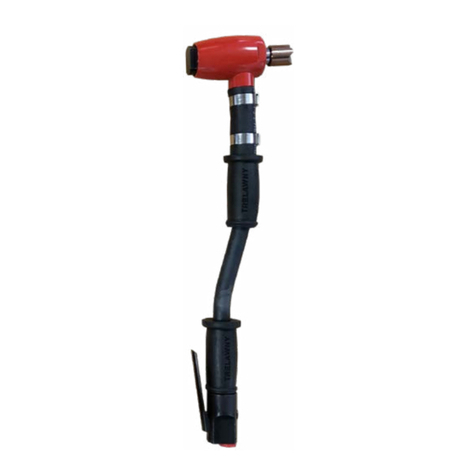
Trelawny
Trelawny VLSF1EX User manual

Trelawny
Trelawny LPS55 User manual
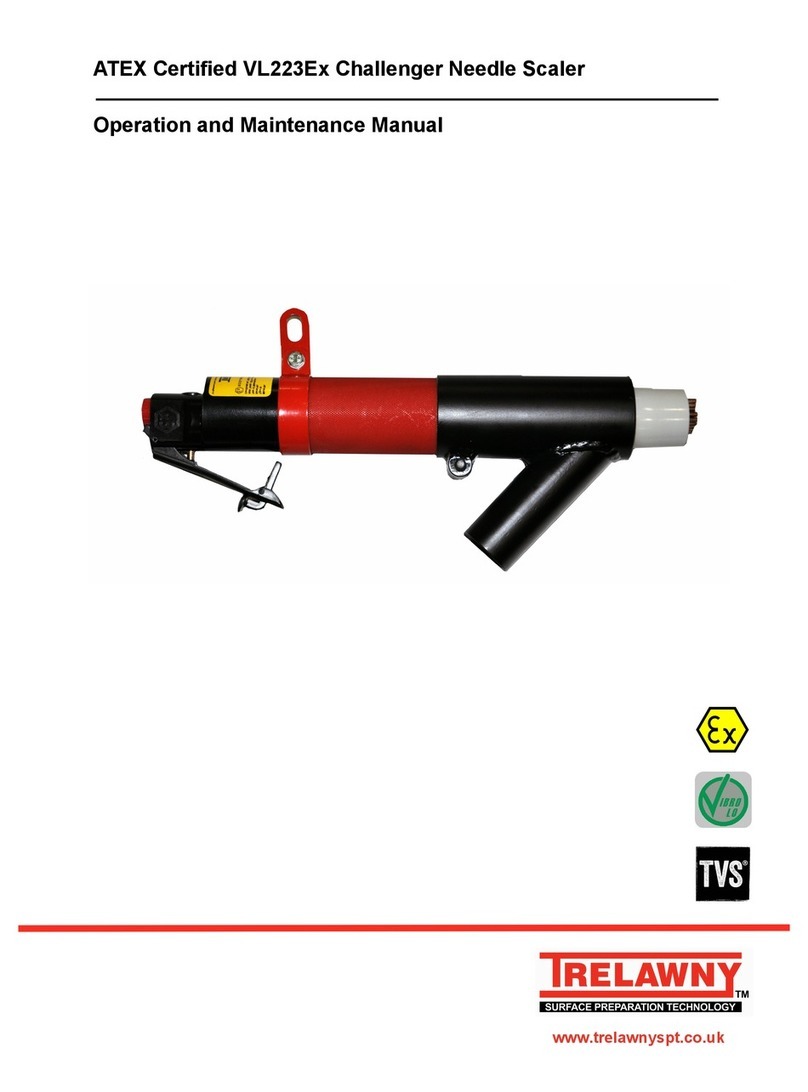
Trelawny
Trelawny VL223EX Series User manual

Trelawny
Trelawny Trident Neptune User manual
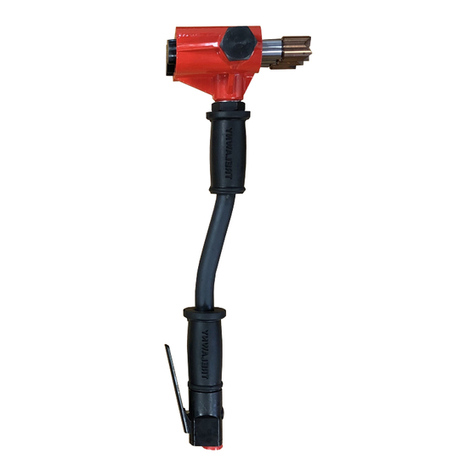
Trelawny
Trelawny SF3EX User manual

Trelawny
Trelawny Vibro Lo Troubleshooting guide
Popular Tools manuals by other brands
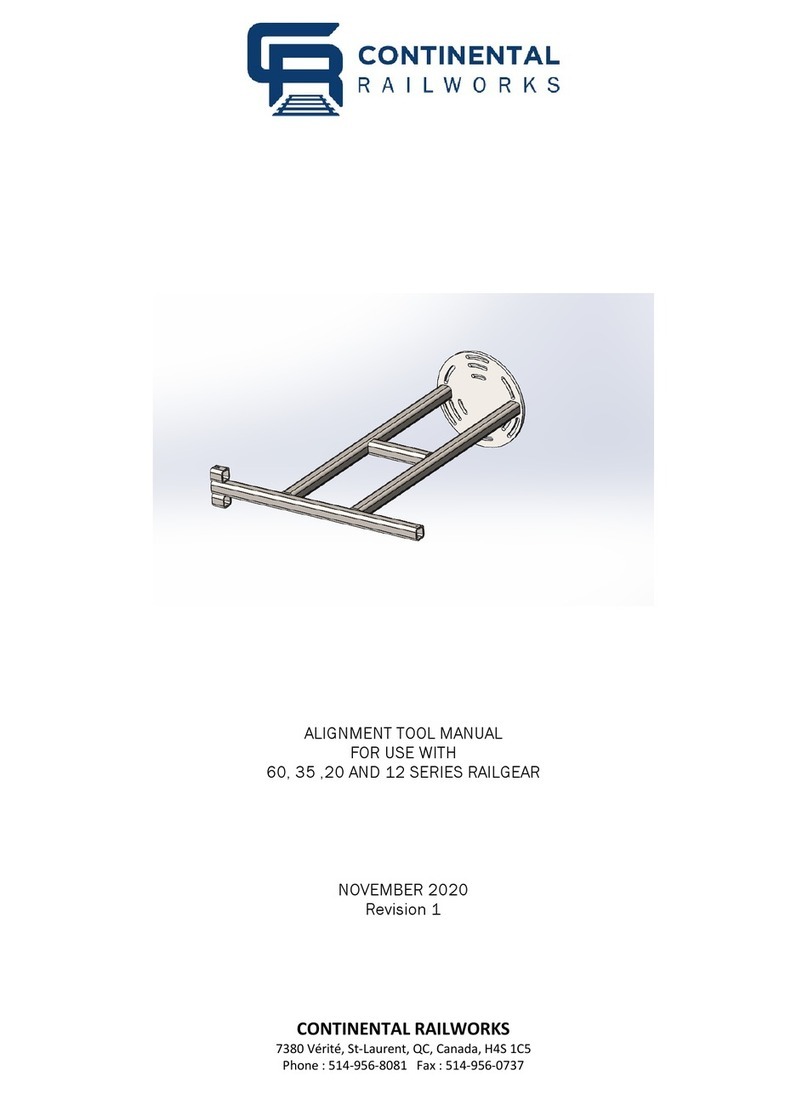
CONTINENTAL RAILWORKS
CONTINENTAL RAILWORKS 60 Series Manual for use
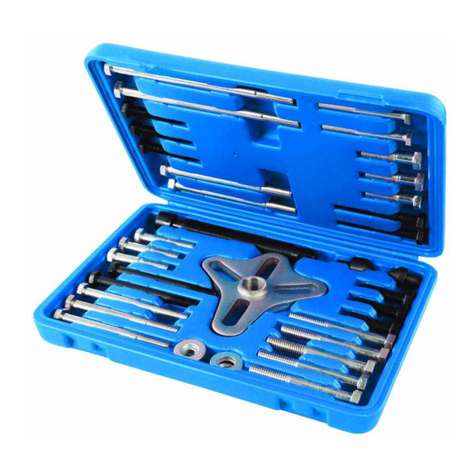
Silverline
Silverline 46pc manual

gilles.tooling
gilles.tooling u2-Y01 owner's manual

Numa
Numa Patriot 45 Care & maintenance
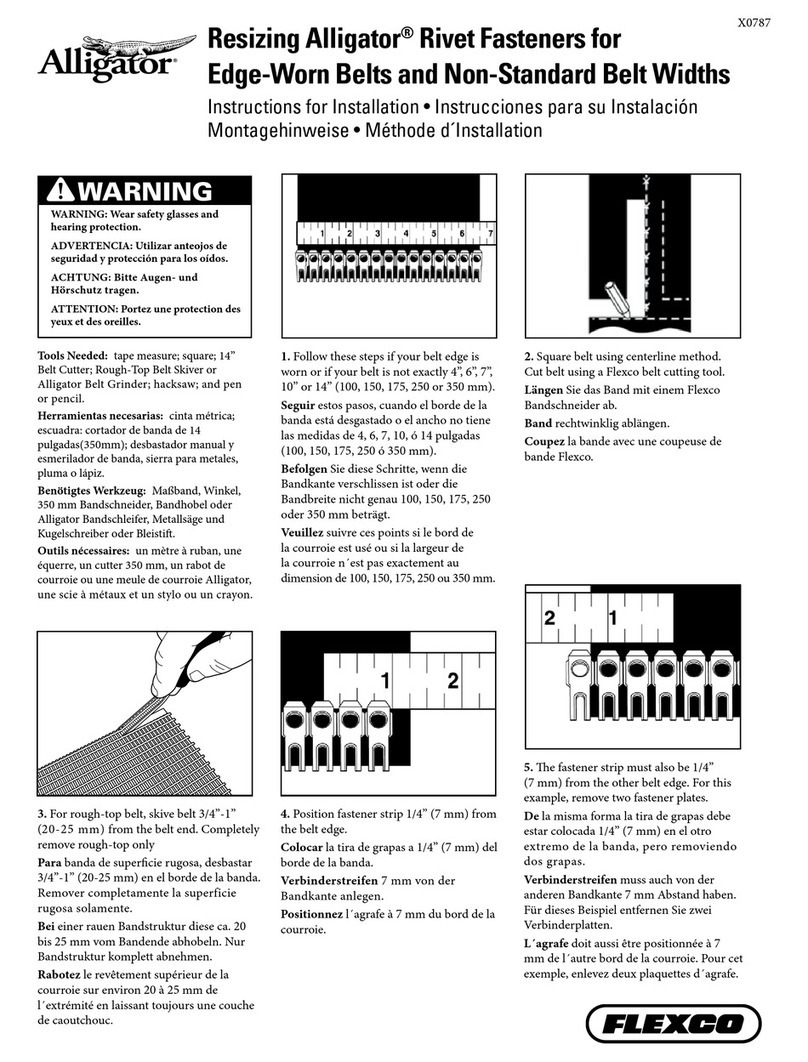
Flexco
Flexco Alligator Series Instructions for installation

BRINKMAN
BRINKMAN CJWINTER 192 Series instruction manual

